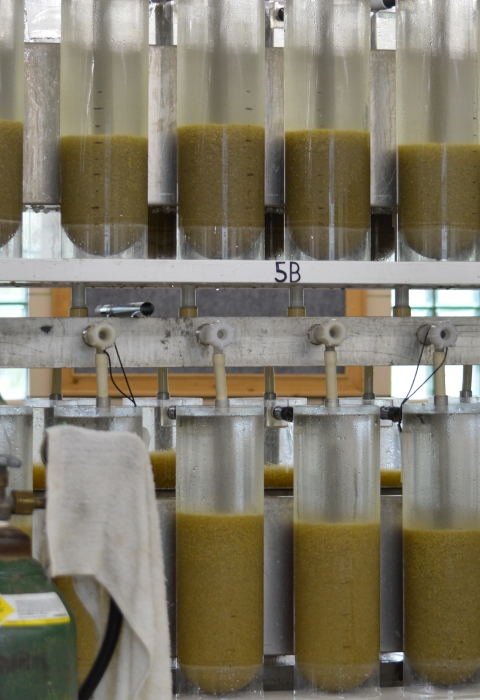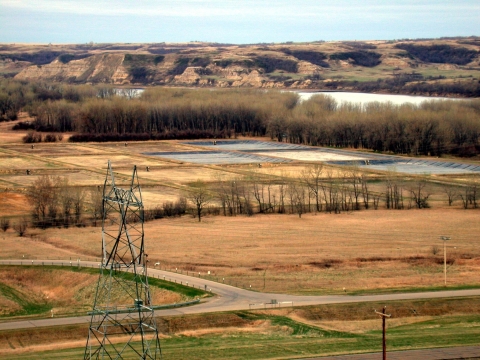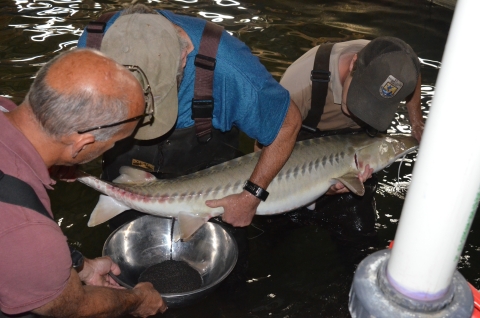What We Do
The hatchery’s 100 acres of ponds are used for production of several native fish species including pike, walleye, burbot, sauger, perch and paddlefish. Most of these species spawn in the spring of the year and consequently the ponds are filled at that time. The biologists add nutrients to the ponds to encourage growth of plankton, the microscopic plants and animals that feed the young fish called fry. The fry grow quickly in the ponds and in about a month are ready to be stocked into area fishing lakes where natural spawning conditions are lacking. For many predatory species like pike and burbot, longer stays in the hatchery ponds result in poor survival since after about a month, the fish’s diet shifts from plankton and invertebrates to other fish.
Trout, salmon, and sturgeon are at the Hatchery in tanks for about a year where they are supplied with a constant flow of well-oxygenated water and fed a diet made specifically for their growth. The following spring, sturgeon, trout and juvenile salmon, or smolts, are released in North Dakota’s lakes and the Missouri River. The trout provide an ‘instant fishery’ as they are released at ten inches and are ready for the frying pan. Many of these fish are released near urban areas to provide opportunities close to home for kids and adults alike to enjoy.
Management and Conservation
Since 1998 this hatchery has released over 275,000 pallid sturgeon fingerlings (3-13 inches in length) and 800,000 larval sturgeons in the Missouri and Yellowstone Rivers from Montana to Missouri. Many other fingerlings and eggs from this facility have been transferred to other hatcheries for further growth and stocking.


